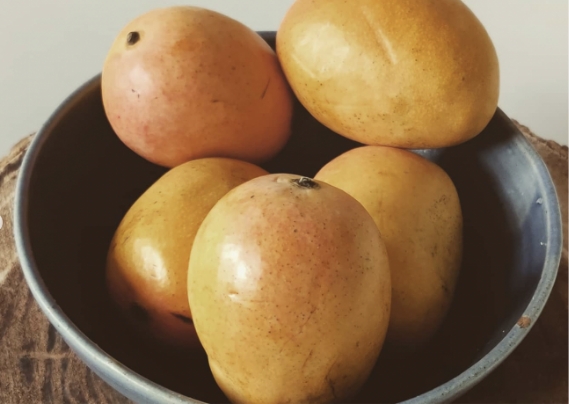The Real Taste of Summer: Discovering Goa’s Mango Obsession

Where: Goa
Best Time to Visit: March to July (Peak Mango Season)
Perfect For: Food lovers, culture seekers, and travelers craving local flavor
Experience the Mango Magic of Goa
When summer rolls into Goa, so does something magical—the scent, color, and flavor of the most prized fruit of the season: mangoes. While mangoes have ruled the Indian subcontinent for over 4000 years, Goa's mango culture is uniquely rich, deeply tied to its Portuguese heritage, and full of varieties you won’t find anywhere else.
If you're planning your next Goa vacation, get ready to indulge in more than beaches. Dive into a season where mangoes take center stage—and let tisyastays be your gateway to local, authentic experiences.
A Slice of History: Mangoes & Goa’s Portuguese Influence
Although mangoes have ancient roots in India, Goa’s love affair with mangoes truly blossomed with the arrival of the Portuguese in the 16th century. Vasco da Gama’s sea route discovery and Afonso de Albuquerque’s conquest of Goa transformed the state into a hub of European trade—and the mango became a colonial export favorite.
Thanks to Goa's tropical climate and fertile soil, the Portuguese found the perfect ground to grow mangoes, especially exotic and superior-tasting varieties. Over time, these mangoes became a cultural staple and source of pride for Goans.
The Goan Mango Calendar: When and Where to Go
- March: Blossoms begin, building anticipation
- April–May: Peak season – markets flood with mangoes
- June–July: Late varieties like Hilario appear
Where to Buy:
- Local homes selling mangoes from their gardens (you’ll spot signs along the roads!)
- Panjim Market
- Mapusa Market
Weekly Farmer’s Markets in North and South Goa
Meet Goa’s Most Loved Mango Varieties
🥭 Mankurad
The undisputed king of Goan mangoes. Mankurad’s fragrance alone is legendary—one fruit can fill an entire Indo-Portuguese mansion with its aroma. Bright yellow with a crimson blush, it’s pulpy, non-fibrous, and bursting with a sweet-sour balance.
🥭 Alfonso (Goa Appus)
Introduced by the Portuguese Duke Afonso, this juicy, fibreless mango is popular all over Goa. It’s the familiar sweet and succulent variety that’s also perfect for tourists new to Goan mangoes.
🥭 Fernandin
Small and oblong, with dramatic, red-tinged yellow skin. This bold, sweet-tart mango has a deep fruity flavor and an excellent aftertaste—perfect for those who love complex notes.
🥭 Xavier
A Goan original with a rich, tangy flavor. The Xavier mango is planted across the state and appears in fibrous and non-fibrous forms. Locals prefer it over imported Alphonsos.
🥭 Monserrat (Mussarat)
Native to Bardez taluka in North Goa, this red-hued variety is ideal for mango preserves and pickles.
🥭 Hilario (Mangilar)
Named after a mango tree in Siolim, Hilario is a late-season variety beloved for its aroma and sweetness. It’s a local favorite when other mangoes fade out in July.
Stay with tisyastays – Experience Goa Like a Local
tisyastays offers curated luxury villas across Goa that blend comfort with authenticity. During mango season, stay with us in villages like Assagao, Siolim, and Candolim, where mango trees line the paths and fresh produce is just a walk away.
Imagine starting your day with a local breakfast, followed by a visit to the vibrant Mapusa Market, and returning to your private pool villa with a basket full of fresh Mankurads.
Come for the Mangoes, Stay for the Memories
Mango season in Goa is more than a time—it’s a celebration of heritage, community, and flavor. From picking up mangoes straight from backyard trees to savoring them over lazy afternoon conversations, this is a Goa that many don’t get to see.
Book your stay with tisyastays this mango season and indulge in a sweet, cultural escape you’ll never forget.
